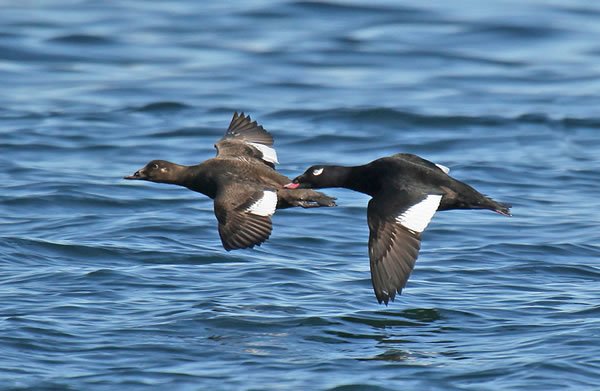Lead Institution(s): University of Saskatchewan
Project Lead: Cindy Swoboda
Collaborator(s): Ray Alisauskas (CWS), IWWR, DUC, SDJV, USask
Focal Species: White-winged Scoter (Melanitta delgandi)
Project Description: This project uses stable isotope analysis techniques to examine potential differences in vital rates of a nesting population of White-winged scoters in relation to winter origin at Redberry Lake, Saskatchewan. This site has the highest known density of breeding White-winged scoters and is considered a migrational divide as band recoveries from Redberry Lake have occurred on both the Atlantic and Pacific coasts. Objectives include 1) Delineate wintering populations of White-winged scoters using stable isotope analysis of feathers collected from known wintering locations, 2) Examine population structure by determining the proportion from both wintering grounds that nest at Redberry Lake, 3) Determine the degree of winter site philopatry using stable isotope analysis of feathers from recaptures in successive years, and 4) Determine cross seasonal effects on adult female survival, body condition, clutch size, nest success and blood contaminant loads (cadmium, mercury, lead and selenium) of females nesting at Redberry Lake in relation to winter origin.
SDJV35 Interim Report FY04
SDJV35 Final Report FY05
Related Publications
Swoboda, C.J. 2007. Population delineation and wintering ground influence on vital rates of white-winged scoters. M.Sc. Thesis. University of Saskatchewan. https://harvest.usask.ca/server/api/core/bitstreams/69818936-9582-453a-8663-4b4705c8746b/content
